the things in the markets
Posted On Sunday, November 15, 2009 at at 10:15 PM by Varaman
~PRECIOUS PRIMS...~
These little guys I just got from a wonderful Prim artist, "Primitive Charms"..which is the same place I found my ghosts and little bats for Halloween and used with the fall leaves on my dining room chandelier.
 The china I will be using this Holiday season! I love it! It's Johnson Brothers "Friendly Village" featuring Winter scenes and I am in such a rush to get started decorating. I was so concerned I wouldn't be up to it..but each day finds me more anxious to get things going! What gets me in such a tizzy to decorate for the Holidays?? :)
The china I will be using this Holiday season! I love it! It's Johnson Brothers "Friendly Village" featuring Winter scenes and I am in such a rush to get started decorating. I was so concerned I wouldn't be up to it..but each day finds me more anxious to get things going! What gets me in such a tizzy to decorate for the Holidays?? :) I found this wonderful African Violet at a garage sale last Saturday for $2.00 and loved it! I thought it was a great buy. even the stems looked real. I have been picking up florals and yard items for pennies.
I found this wonderful African Violet at a garage sale last Saturday for $2.00 and loved it! I thought it was a great buy. even the stems looked real. I have been picking up florals and yard items for pennies. This lovely find was $5.00 but worth every cent! I found this one two weeks ago on my first Saturday out. It's amazing what I will go through to go to garage sales! :)
This lovely find was $5.00 but worth every cent! I found this one two weeks ago on my first Saturday out. It's amazing what I will go through to go to garage sales! :) The pot is VERY heavy (concrete?) and it obviously was a well made silk. LOVE IT!
The pot is VERY heavy (concrete?) and it obviously was a well made silk. LOVE IT!I would say it was a good Saturday at the garage sales!
It is such a delight to find so many women in the blogging world that love Holiday decorating like I do! I have wonderful girlfriends, but over the years not all of them were as into it as I was. And now...well...I am in 7th heaven! I could visit all day long...and all night long for that matter...and never get tired of finding delightful homes and ideas and woman! :) Makes me smile!!
the things in the markets
Posted On at at 10:08 PM by VaramanMany years ago when the Grands were tiny..I wandered into a lovely old building with a huge three inch thick oval door (beautiful!) that sold antiques and came upon this lamp. The cord was wrapped in silk and it was lovely. Not having enough money to purchase it..I reluctanly put it on layaway, which was popular in those days. I hated layaway, but I was desperate to have this lovely lamp. It is a floor lamp...and had been redone to perfection.
The shade was exquisite and etched with tiny roses of pale pinks. finally it was paid for and I brought it home and gently placed it behind my favorite big easy chair. ON CARPET! In those days the little Grandchildren spent a lot of time with us and as toddlers will do, they wandered about exploring pulling this and pushing that.
One day our little Jeffy, now in his 30's, wandered over and pushed on the tall spindly floor lamp and to this day I see it falling...in slow motion! I made a mad dash across the room with my arms outstretched and watched as it crashed to the floor and exploded. Poor little Jeffy heard Grandma scream and dash and ran as fast his tiny little legs would go in the opposite direction terrified at the whole affair!
No matter! It could be replaced with a bit of ...searching. And I have searched....for 28 YEARS! Nothing I found looked right...or fit! I replaced the shade with one that was supposed to go in a ceiling lite fan..and this is it below!





Saturday, determined to get out and see the world..and what a good thing it is that I did! Above is the lovely old shade I finally found!
We had found nothing so decided to go have some breakfast and suddenly there was another sign in front of a lovely old home. One I used to walk past every day! We stopped for one last look...and in an old cardboard box stuffed with newspapers..there it was!! My lamp shade! No..not like the one that had broken so many years ago...but one that was old..and looked like it would fit...and...it was ONLY $2.00. The woman was about my age and said she had had it for years and years. So..home it came...and LOOK! It fit!
I need to touch up the screws..get a couple of smaller ones...and touch up the cord that Howard replaced..but..IT FITS! AND I love it! Do you?? I hope so! :)



It is so nice to find something that just seems to fit...especially when it takes so many years! Now Jeffy (um..Jeff) is expecting his own first little son in December.. :) What fun they will have...but watch the floor lamps Jeffy and Leah! :)
Hugs to all...what a great life it is..each and every day a blessing right now!
I really do hope you like my new shade as much as I do!
Mona
Saturday, November 7, 2009
~SMILIN' ALL OVER MYSELF..
Yes, I took it myself with my not so trusty little Kodak! Yes, it's a wee blurry..but you get the idea...
 What a great day this was! My CT scan came out negitive, NO blockage! NOTHING is wrong with me...I am fine! Getting better every single day.
What a great day this was! My CT scan came out negitive, NO blockage! NOTHING is wrong with me...I am fine! Getting better every single day.I am SO pleased! They called and said my test was fine and dandy!.....The doctor put me on a triple dose of Zantac, and will see me on Monday. I am fine. He thinks I ate too much at one time and said to stick to small servings of easy to digest food for a bit longer. Last night and today were fantastic. The surgery is no problem...healing wonderfully AND my tum feels great! I think I will live! :) At least for a while longer. :) I even went out and pulled some weeds..packed away some more Halloween. Even went to garage sales this morning and found something I have been searching for a long time. I'll share it tomorrow! YIPPEE!! :)
Have a wonderful Sunday...
and lotsa hugs!
Mona
Wednesday, November 4, 2009
~ I KNOW..I KNOW...~
My blog is suffering and I know it and I am SO sorry. I am trying so hard to visit and do some posting..but it is just so difficult for me. I will keep trying though. Never in my life have I found it so hard to get past an illness.I feel (as Pat used to say) like a gold bricker! :)

I feel like ranting and raving but that would just be so silly and it wouldn't help me get well any faster. I am progressing..but I am having too many moments of less than happy thoughts...and that just isn't like me. Now I think I have some sort of flu. My tum hurts something terrible. It's as though I consumed poison or something. Could that be the flu? I hope so! The stomach flu??

I was going to take a picture of the Halloween containers...and the stack of things to be put away out on the patio...but decided not to. I may be moving slow..but it will get done. :) At least it is out of the house... Oops! I see I forgot something hanging in the front window...shoot!
The children came by this weekend and are going to paint the inside of the house. I am delighted. I will even get my beam across the family room dividing it which I have wanted for a long time. At this time there are THREE different light fixtures. LOL Ah well. The beam will go where the old light fixture is now. Bless their hearts!
I want that "cottage cheese" removed...but...I am too weak to do it...my sweet husband says it "doesn't bother" him... :) I simply cannot ask the children to do it...so perhaps when I am well. We'll see. Then we can get our carpet and hardwood floors! Yippee!
Ok...I will take pictures tomorrow...if I can...and post them. You will see how horrible it is. The ceiling, I mean!
Love and hugs...(if I haven't visited you yet...I WILL be there soon!)
Mona
p.s. Another CT scan at 7:15 this Friday morning. Wish me luck. As you can see by the time...I am up. I gave up and took a couple of pain pills. It's so quiet, not a sound. Perhaps when the pills work I can read a bit. I can't even hear the train in the distance....so quiet.
Sexing the Body: Gender Politics and the Construction of Sexuality. By Anne Fausto-Sterling.
Posted On Tuesday, November 10, 2009 at at 4:40 PM by VaramanNew York: Basic Books, 2000, 473 pages. Cloth, $35.00.
Sexing the Body: Gender Politics and the Construction of Sexuality. – Review – book review
Journal of Sex Research, Feb, 2001 by William B. Stanley
The prevailing theory of sexual dimorphism in Western culture can be traced to antiquity, in the work of philosophers like Aristotle and in the Judeo-Christian religious tradition. These early ideas have had a powerful influence on our views of sex and sexuality. Throughout most of our history, the policing of sex categories and related sexual behavior was largely left to religious and civil authorities. During the nineteenth century, however, the power to discipline sex and sexuality gradually shifted to the scientific and medical communities which took the lead in defining sex categories and what was normal with regard to sex, gender, and sexuality (Dreger, 1998; Herdt, 1996).
Among the most significant scientific influences on the reification of a theory of sexual dimorphism in the nineteenth century was the work of Charles Darwin. His evolutionary theory held that the sexual categories male and female emerged to serve the fundamental purpose of species reproduction required for natural selection and survival. The binary sex categories and the characteristics that distinguished them were defined as natural across time and place, a phylogenetically inherited structure of two basic types of human groups. By the end of the nineteenth century, male and female came to be seen as “innate structures in all forms of life … [and] heterosexuality as the teleologically necessary and highest form of sexual evolution” (Herdt, 1996, p. 28).
We outline this brief history to provide a context for the importance of Fausto-Sterling’s book Sexing the Body. This is a most provocative book containing a radical perspective. Fausto-Sterling considers problematic what she describes as our reliance on false dichotomies like nature/nurture, biology/culture, and essentialism/constructivism, and offers a persuasive argument for abandoning our current theories of sexual dimorphism. The persuasiveness of the book comes from its even-handedness and well-researched content (it took Fausto-Sterling more than 6 years to complete her research and writing).
The 225-page narrative portion of the book is clearly written and guides the reader through some very difficult issues and scholarship. Fausto-Sterling also makes creative use of artwork, illustrations, cartoons, and helpful charts and tables. In addition, the book contains 122 pages of footnotes, 67 pages of bibliography, and a detailed index.
Sexing the Body is divided into nine chapters that move from an analysis of the external markers for sex (e.g., anatomy, genitals), to an examination of the brain, sex glands, hormones, and genes as each has become part of the current discourse on sex. The book concludes with a chapter that describes an interdisciplinary, dynamic systems approach to the study of sex, gender, and sexuality.
Fausto-Sterling provides a fair and even-handed treatment of the issues and has taken the time to study the literature in a way that respects the scholarship of those with whom she has significant disagreements. For example, she is careful to explain the complexities of the psychosexual neutrality theory proposed by Money, Ehrhardt, and the Hampsons. She notes that Money’s ideas were never quite as simplistic as some of his critics (e.g., Milton Diamond) have charged.
In addition, Fausto-Sterling, a committed feminist, is not hesitant to criticize the limitations of certain feminist positions that are dualistic or essentialist. She is also open to the criticisms of her own work, crediting social psychologist Kessler for explaining the limitations of her earlier views on sexual categories as represented in the now famous 1993 article on “the five sexes.” And she admits that her earlier characterization of Young’s work in 1995 was not fully accurate, although she still maintains her basic critique of Young’s overemphasis on biological explanations for sexuality.
Fausto-Sterling brings an unusual interdisciplinary perspective to the study of sexuality. As a scientist and biologist, she believes in a material world and understands the importance of experimentation. However, her knowledge of feminist scholarship and the history of science has led her to focus on how the production of scientific knowledge is influenced by and rooted in particular histories, human practices, language, politics, and culture. In her view, scientific “facts” are not universal but always constructed within a particular historical and social context. As our social views have changed, so too have our scientific views of sexuality and the human body.
The influence of Foucault’s ideas on disciplines and regimes of truth is also evident in Sexing the Body. Foucault claimed that the structural constraints of the disciplines shape how we are able to look at the world. He also described how our concepts of normalcy emerge to become taken-for-granted knowledge. The influence of normalcy in the study of sexuality has been particularly pernicious. In chapters three and four, Fausto-Sterling presents an historical overview and analysis of how a medical discourse emerged to provide a scientific rationale for sex assignment and the surgical “correction” of an intersexed infant’s genitals. Given the impact of our theoretical assumptions regarding sexual dimorphism, it is not surprising that the medical community (simultaneously reflecting and shaping the culture) has tended to view the birth of intersexuals as abnormal mutations and medical emergencies. In fact, most of these “emergencies” are determined by cultural considerations.
The development of new medical technologies usually requires (or helps to construct) a scientific/cultural basis for their use. Such an influential rationale for contemporary surgical technology was provided by the work of the Hampsons, Money, and Ehrhardt. These scholars claimed that human sexuality was highly malleable. Money and his colleagues acknowledged that biological factors influenced the course of human sexual development, but they claimed that social learning had a more powerful effect. In essence, all children could be raised as either a boy or a girl, provided the sexual assignment was done within the first two years and adequate genitals could be constructed surgically. This research has provided the epistemic basis for the guidelines used by the American Association of Pediatricians over the past four decades.
The theory of psychosexual neutrality has not gone unchallenged. Research claiming a biological basis for human sexuality had begun in earnest during the second decade of the twentieth century and was well established during the 1950s and 1960s. In 1965, Diamond, Money’s most persistent and perceptive critic, published an article that raised serious questions regarding Money’s research. However, it took more than thirty years to discredit Money’s central ideas.
Perhaps the single most important event in this shift from Money’s ideas was Reimer’s (Money’s subject in the John/Joan case) decision to go public and refute Money’s fraudulent claims regarding the success of his case (Colapinto, 2000). Nevertheless, the American Association of Pediatricians still recommends surgical intervention and sex reassignment for infants born with ambiguous genitalia. Fausto-Sterling has joined with intersexual activists (e.g., Chase) in calling for an end to all such unnecessary infant surgery.
The impact of culture and politics on the production of scientific knowledge is well documented throughout Fausto-Sterling’s book. In chapter five, she provides a detailed account of the scientific attempt to verify the differences between males and females with regard to the section of the brain called the corpus callosum. Close examination of this research reveals an alarming number of methodological problems. Consequently, according to Fausto-Sterling, the representations of the corpus callosum found in the current research literature are literary fictions (p. 127). She is not opposed to this sort of research in principle but argues that we should be more sensitive regarding the extent to which such research has been inconclusive and shaped by prevailing cultural assumptions. She believes we would make more progress if we were to focus on individual differences and how “the brain develops as part of a social system” (p. 145).
In chapters six, seven, and eight, Fausto-Sterling traces the history of our conception of “sex hormones” and how this concept was applied to research on sex. By 1940, scientists had identified, named, and reached a general consensus on how to measure sex hormones and their effects. The new science of hormones, endocrinology, became enormously influential in the construction of the modern discourse on sexuality. As this research progressed, it became apparent that what were called sex hormones in fact played multiple roles and affected many areas of the body including the brain, liver, gall bladder, kidneys, blood cell formation, the circulatory system, lipid and carbohydrate metabolism, and muscle activities. However, the assumption that the sex hormones were gendered was deeply ingrained and difficult to abandon. Indeed, the etymology of the terms androgen (to build a man) and estrogen (to create estrus) illustrate the role played by sexual ideology.
An important example of how the course of research on sexuality has been shaped by cultural beliefs is illustrated by research on rodents from the 1930s to the present. Fausto-Sterling describes the development of Beach’s research and how his complex theory of animal sexuality was eventually replaced by the far narrower ideas of Young and his colleagues. Beach, the leading scholar in this area from the 1930s through the 1950s, was critical of what he believed were the unscientific assumptions of the main social learning theories popular during the 1940s and 1950s. He argued that biology had a more significant influence on sexual behavior. However, Beach’s theory was not reductionist. He believed that we had to study the complex interaction of the various physiological systems (e.g., hormones, brain, central nervous system) as they interacted to shape behavior. He also demonstrated the significant influence individual genetic differences within sex and species had on animal sexuality. In addition, Beach’s research documented the important effects context and experience had on sexual behavior. Another important finding was that adult bisexuality and homosexuality were natural, not abnormal behaviors.
In 1959, Young and his colleagues presented what came to be the dominant scientific view of sexual development. The new theory–the organizational/activational (O/A) model of hormone activity–held that “pre- or perinatal hormones organized central nervous tissue so that at puberty hormones could activate specific behaviors” (p. 214, italics in the original). The O/A theory presented a direct challenge to the psychosexual neutrality theory proposed by the Hampsons and Money.
Neither the Hampsons nor Money ever claimed that biology played no role in sexual development; they did argue that early social learning had a more powerful influence on the development of our sexuality. Thus, the debate between Young and his colleagues on one side and Money and his colleagues on the other was around the relative importance of nature versus nurture. This dispute was not trivial, but we should note that both groups accepted that sexual dimorphism was natural and that the nature/nurture dichotomy was the way to approach the issue. Over time, the O/A theory came to dominate research on human sexuality, although Money’s influence on the treatment of intersexuals continues into the present.
Fausto-Sterling claims that the rejection of Beach’s ideas and the shift to the O/A theory has had a negative impact on sexuality research and our understanding of human sexuality. As individual genetic differences (lab rodents were bred to eliminate such differences) and the effects of experience were excluded from the focus of O/A research, biology came to be seen as the foundation for sexual development. For some researchers, biology was the overriding cause of human sexuality. However, even those who believed that an interaction between nature and nurture best explained sexual development assumed that biology provided the basic foundation to be shaped by subsequent experience.
Fausto-Sterling argues that research on sexuality will remain constrained as long as we continue to accept the O/A mind/body dualism, which holds that the body (nature) is the fundamental precursor to behavior. She believes we need to switch our perspective “so that we see nature and nurture as an indivisible, dynamic system.” (p. 228). This is not, in her estimation, a new view, but one that has been neglected. She cites research (animal and human) to illustrate how the environment (including the prenatal environment) can change our anatomy, brain, and central nervous system. In this way, “events outside the body become incorporated into our very flesh” (p. 238).
Fausto-Sterling argues for a more flexible view of sex and sexuality, one that does not give primary signifying status to the genitals but allows an individual the right to redefine his/her sexual identity. She urges researchers to abandon terms such as sex hormones, androgen, and estrogen and to use the more accurate term steroid hormones instead. She also asks that we consider removing the category sex from our major forms of identification (e.g., driver’s license). While such proposals might seem radical to many, they are motivated by her research on the dysfunctional effects of our current views of sex and sexuality.
Advertisement
Compared to other primates, humans take far longer to reach maturity. One can argue that the evolutionary benefit derived from remaining so long in such a vulnerable state comes from the increased opportunity for environment (cultural and physiological) to shape our behavior. Understanding this sort of dynamic system requires both a change of view and extensive research collaboration across disciplinary boundaries. Sexing the Body promotes the dialogue required to move in this direction. Fausto-Sterling claims to “have written two books in one: a narrative accessible to a general audience and a scholarly work intended to advance discussion and arguments within academic circles” (p. ix). She has succeeded on both counts.
samdach choun nath
Posted On Friday, November 6, 2009 at at 10:30 AM by VaramanI. Life
Choun Nat was born in the eleventh of March 1883 in Kampong Speu province (Kampong Speu is located in North of Phnom Penh, the capital of Cambodia, about 48 kilometres). He was from agrarian family. His mother’s name was Youk and father’s name was Prom Choun. Choun Nat had only one brother who was Sir. Choun Nut.Reaching the age of twelve, his parents took him to one Buddhist monastery named Pothiprek, located in Kandal Provice (Kandal Provinnce is located in the south of Phnom Penh, the capital of Cambodia, about 10 kilometres) so that he could be instructed Khmer literature by Keo Morm. When he turned 14 (1897), he became Buddhist monk and took studies in Pothiprek monastery for two years. Then he left for Hounaloum monastery, located in Phnom Penh, close to Royal Palace. Over there, he stayed with master Tep Sao. But he returned to Pothiprek monastery when he was 21.
Choun Nat tirelessly struggled in studying Pali and other languages, especially French. Students in his generation stated that Choun Nat was always the front-runner of all other students and always progressed. Seriousness in every subject he mastered, Choun Nat insightfully understand the grammar of every language; Sanskrit, Khmer literature (Khmer and Cambodia is used correspondently). Not only grammar, Choun Nat impressively remembered the deep words related to ancient culture. Choun Nat is able to communicate in Thai, Lao, French, Vietnam, and English. He was excellent and unrivalled among the students of his generation in Pali language. In 1913, he contested on “chasing sentence” in front of king Sisowat, and Choun Nat could chase for four sentences, which was the highest in that era. 1915, Choun Nat ranked number two in the national contest, and was appointed Advanced-Pali language-Professor in Soramrith High School (Soramrith is the father of King Norodom Sihanouk).
Choun Nat had deep understanding of Pali language, he could read or pronounce in accordance to Siri Lanka’s, Burna’s, Mon Khmer’s, Siam’s, and Laos’s accent. 1922 and 1923, he went to studied Sanskrit and archaeology in Hanoi, North Vietnam.
II. Personality
Choun Nat treated everything seriously, from he was young to the age of 86. He sometimes worked the whole night without sleeping. Choun Nat slept only about four to five hours only a day. It was his faculty to tirelessly and continuously work.Choun Nat was considered highly intellectual, especially in term of quick/focus response and decision. His praying contained the advisory connotations in both holy and unholy knowledge. Most of his praying aimed to instruct everyone the value of industriousness, unity, religion, peace, and the routes to the prosperous future for the laymen. In every praying he did, Choun Nat aimed to insert patriotism into people’s hearts.
Choun Nat had entrepreneurial and leadership spirit, as he could vigorously go everywhere to and understand every situation he attended.
Choun Nat had the personality of “helper”. In every activity he did, Choun Nat aimed to bring prosperity in the present time as well as to the future. These humanitarian activities were called “the intellectual deeds”. Choun Nat had contributed to helping the country since 1920. He bought three hectares of land surrounding the monastery to enlarge the monastery, donate to construct roads, establish concrete vice-Pali shrine, constructed one small and one big bridge, financially support from the low-grade schools to the universities, bought a hectare of land and made it the ownership of the religion…etc.
III. Daily Activities
Choun Nat only regularized one kind of meal, which was lunch, and breakfast was in regular, sometimes he didn’t have it.
When there was guest, he immediately came to hospitalize though he was being hectic with writing. Choun Nat was absolutely careful in using the time everyday, because he had too much to execute. But if he was really free from work, he warmly hospitalized the guest; explaining the Buddhist philosophy, philosophy for everyday life, which sometimes took 4-5 hours and sometimes for the whole night.
Every day, night and daily, Choun Nat always had work to complete. Choun Nat had the philosophy of “live to work”.
IV. Miracles Before Demise
On 10 September 1969, Choun Nat dreamed about two air- oaring tombs, and those tombs became more and more diminished in size, until it vanished. The image of the dream was positively interpreted. Choun Nat himself, interpreted that his group would achieve their goals.
Another dream happened on the 25 th of September 1969 at 20.00 to 22.00 o’clock. This time, he saw the moon, surrounded by red and blue colour. Choun Nat started to be sick on the 23 rd of September 1969 at 15.45. French doctor, Mr. Mazo claimed that Choun Nat’s disease was not really serious. However, the ministry for health appointed two doctors for Choun Nat.
Choun Nat died at the age of 86
V. Achievements
¡ 1919: Secretary of Khmer Dictionary Consultancy.¡ 1925: Member of Alphabet Edition Group.
¡ 1926: Invigilator of grade-eight national examination and French-Khmer advanced grade eight in Phnom Penh.
¡ 1927: Nominated to be the member of final-edition-group of Khmer dictionary. Choun Nat was solely responsible to produce dictionary until the first and second episode of the dictionary were published five times. In the same year, Choun Nat was member of final-year-editor group for the Cambodian library, which is now “The Buddhist Centre of Cambodia”.
¡ 1930: Nominated vice-director of Phnom Penh Pali School. He was, in the same year, nominated Buddhist Koran assistant-member of Buddhist Centre, Phnom Penh.
¡ 1932: Nominated member of vocabulary-selector group of the ancient Khmer writers to insert those terminology into Khmer Dictionary.
¡ 1933: Nominated member of the examination group of the books, published by ministry for education.
¡ 1934: Member of edition group to select Khmer vocabulary to compare with French vocabulary, to use in administrative affairs.
¡ 1935: Professor, teaching Pali, Sanskrit, Khmer literature, Laos language of the top grade in Sisowat High School, Phnom Penh.
Besides these, Choun Nat continuously received national modals; medal in 1917, 1932, 1937, 1942, 1944, 1948, 1962, 1963 and finally in 1969.
VI. Social Status
¡ 1942: Nominated director of advanced Pali school, Phnom Penh (this school is now called “Preah Soram Rith Buddhist High School).¡ 1944: Top director of Hou Naloum monastery.
¡ 1945: Advanced Consultative Group for the monk.
¡ 1947: Vice-committee for culture of the national committee for education.
¡ 1948: Director of the Buddhist-etiquette committee, examining on the books for Buddhist rules of Cambodia.
¡ 1950: Appointed the nation’s top president of the monks in Mahayana vehicle (Buddhism is divided between two vehicles; Mahayana and Theravada).
¡ 1957: Provided the highest status of monk by Burma.
¡ 1961: Director of interview about national literature, to be broadcasted every Friday.
¡ 1963: Norodom Sihanouk appointed him the highest hierarchy of royal monk.
¡ 1964: All the Cambodian writers unanimously appointed him president in writing Khmer literature and distinguished member of Khmer writer association.
¡ 28 May1967: Received Ph. D in national literature from Royal University of Phnom Penh.
¡ 1968: Director of the committee, examining to-be-published Khmer history texts.
¡ 1969: Director of the committee, examining and defining the meanings of Khmer flag.
VII. Obligations Fulfilled Abroad
¡ 1931: Led the delegation of the monk officials to the capital of Laos to participate in the inauguration of the Laos’ Buddhist centre, and to discuss about academics of the vice-Palic school in Laos.¡ 1933: Led the delegation of Khmer monks to visit all the Khmer pagoda, located in Kampuchea Krom (This territory was once belonged to Cambodia, but the French had transformed it into Vietnamese ownership).
¡ 1939: Led delegation to Laos again. This time was to discuss the affairs of Laos’ Buddhist centre and the academics in the Pali school in Laos, to remind the Laos people to go on the same track as the Buddhist academics in Cambodia.
¡ 1943: Correspondent Member of the French academic centre in the west. 1942: He was appointed distinguished member of this centre.
¡ 1950: Led the delegation to Sri Lanka to establish World Buddhist Association.
¡ 1953: Led the delegation to Burma.
¡ 1954: Led the delegation to the Capital of Burma again.
¡ 1955: Led the delegation to Burma again to finalize the annual meeting.
¡ 1959: Led the delegation to attend Visak Bochea Festival.
And more…
VII. Conclusion
What Choun Nat had done, is beyond the capacity of human kind! A whole of his life was to donate to revitalize the cultural identity of Cambodia. Knowledge about Choun Nat life would be of great model for the next generation; how could Choun Nat delegate the enormous obligations? Anyone ignore Choun Nat would lose great intellectual wealth. Choun Nat’s biography is classified into the cultural heritage of Cambodia, and Cambodia must preserve this cultural heritage.-----------


best girls
Posted On Thursday, November 5, 2009 at at 9:32 AM by VaramanBiolin capsules contain the pure, natural oil of blackcurrant seeds, which is known to be beneficial to women. The natural contents (Essential Fatty Acids of Biolin) are 3 times richer than Evening Primrose Oil (EPO). Biolin when used regularly will strengthen the body’s resistance to diseases and illnesses, maintain a healthy heart and help to maintain the desirable body weight. It is also popular as an aid in regulating the menstrual cycle, while helping to maintain a healthy, supple skin. | ||||||
Features
| ||||||
Benefits
| ||||||
Potential Users | ||||||
| ||||||
| ||||||
| ||||||
| ||||||
| ||||||
Usage/Recommendations 1-3 capsules daily, or as required. Store in a cool, dry place. | ||||||









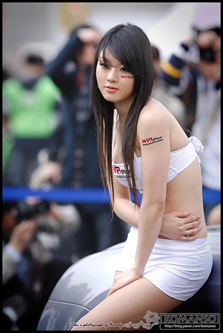






























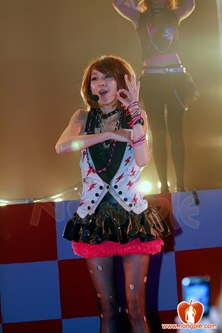








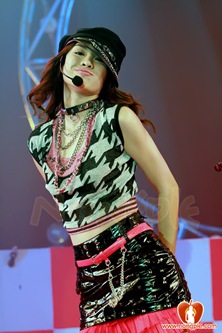



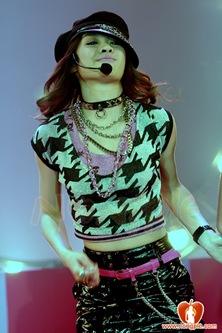
























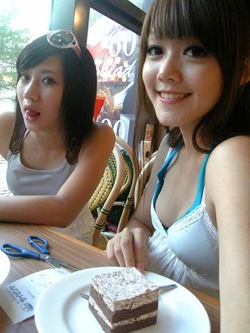












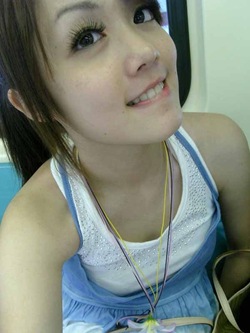







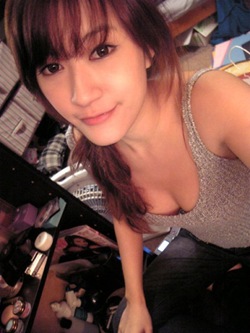







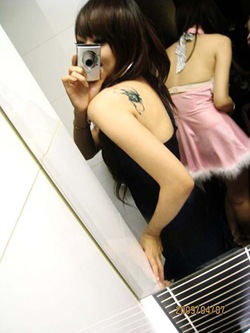
























































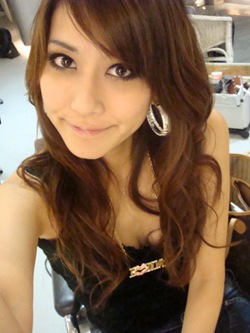







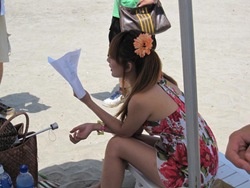





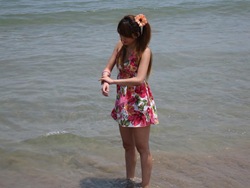




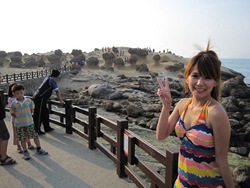




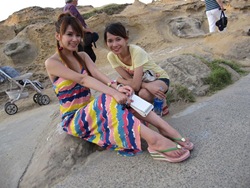
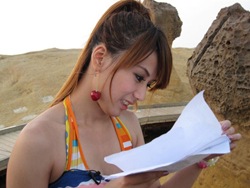

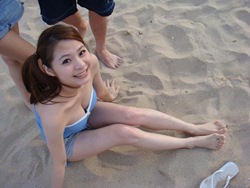
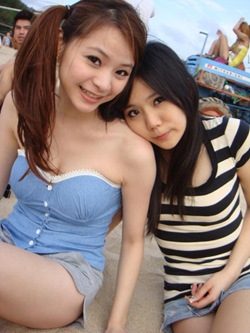
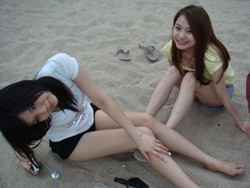





































Yuzuki Aikawa is a beautiful gravure idol from Niihama City. Yuzuki Aikawa was in Tokyo in 2002 studying foreign languages with the aim of studying abroad when she was scouted at the Shibuya 109 building by the same agency that discovered idol Chinatsu Wakatsuki.




















Yashiro Minase is a beautiful gravure idol from Gifu prefecture who likes swimming, basketball and cooking. She’s appeared on many TV Shows and her first movie, "The Machine Girl".




















Name : Gu Ji Sung
Birthday : 1983
Place of birth : South Korea
Height : 172cm
Weight : 49kg
Profession : Racing Super Model












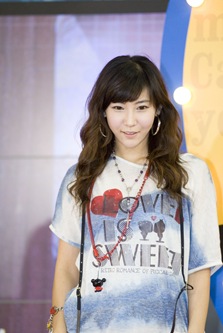


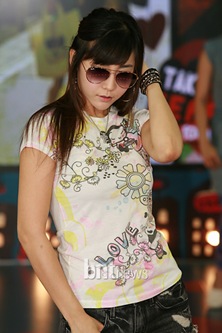
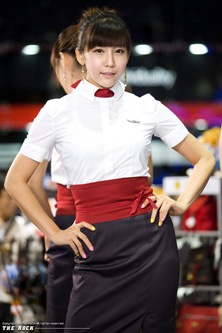
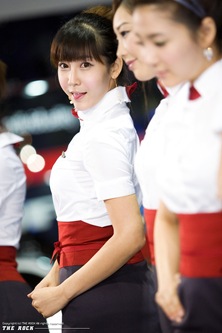
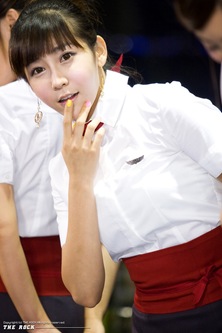
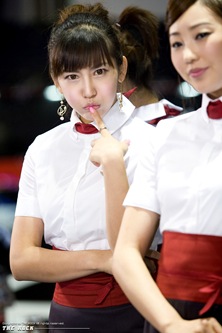



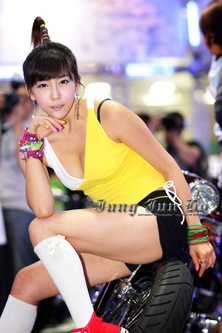

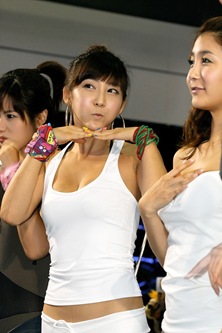
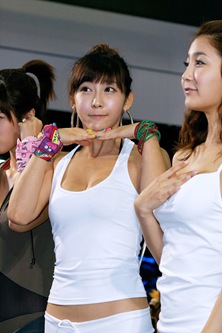



Primary Country : South Korea
Ethnicity : Korean
Birthname : Hwang Mi Hee
Home Town : Seoul
Birthday : Thursday, 21 January 1982
Height : 174cm
Job : Model / Race Queen
Relationship Status : Single



























